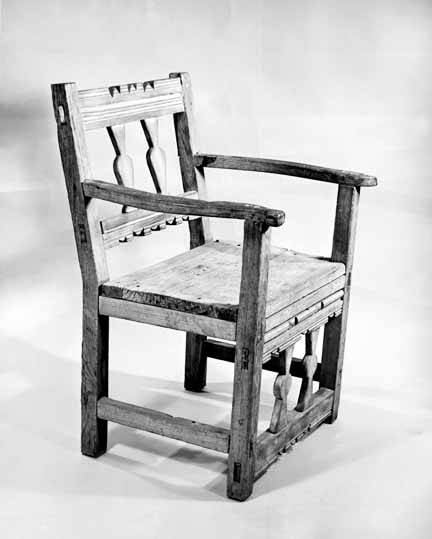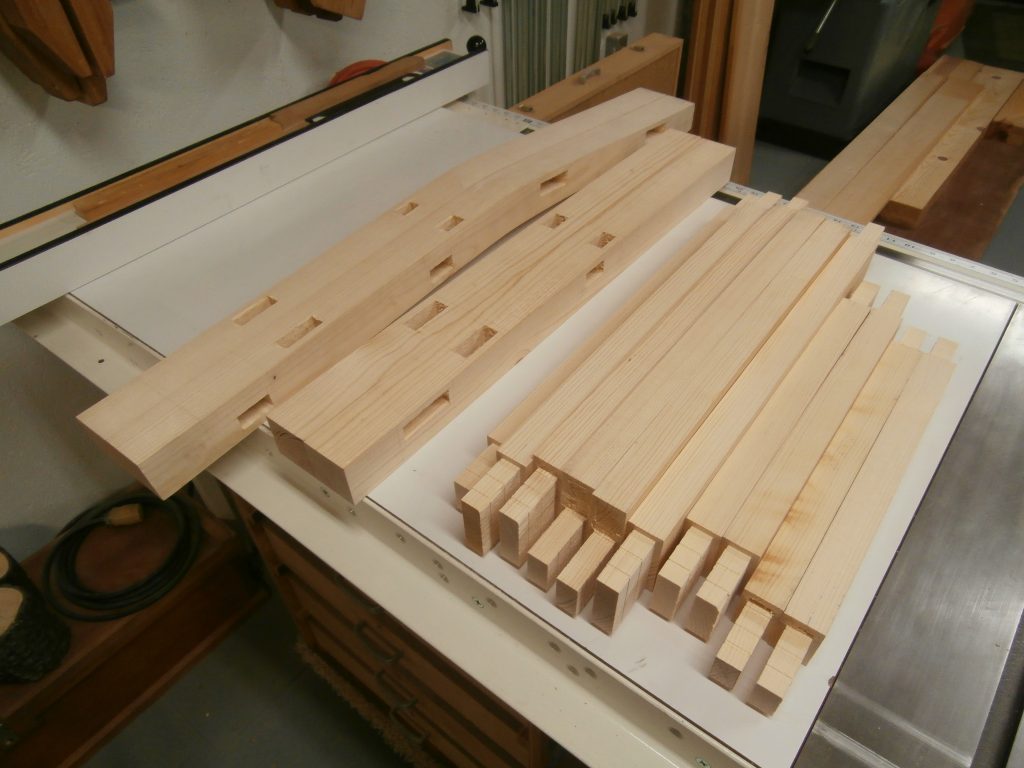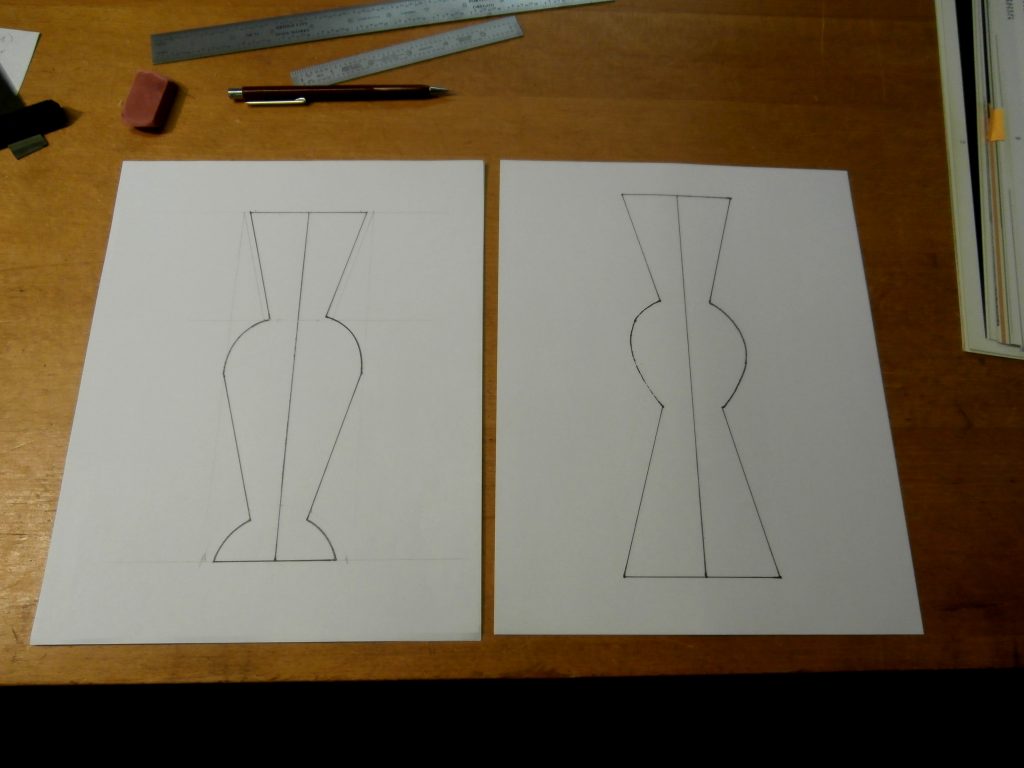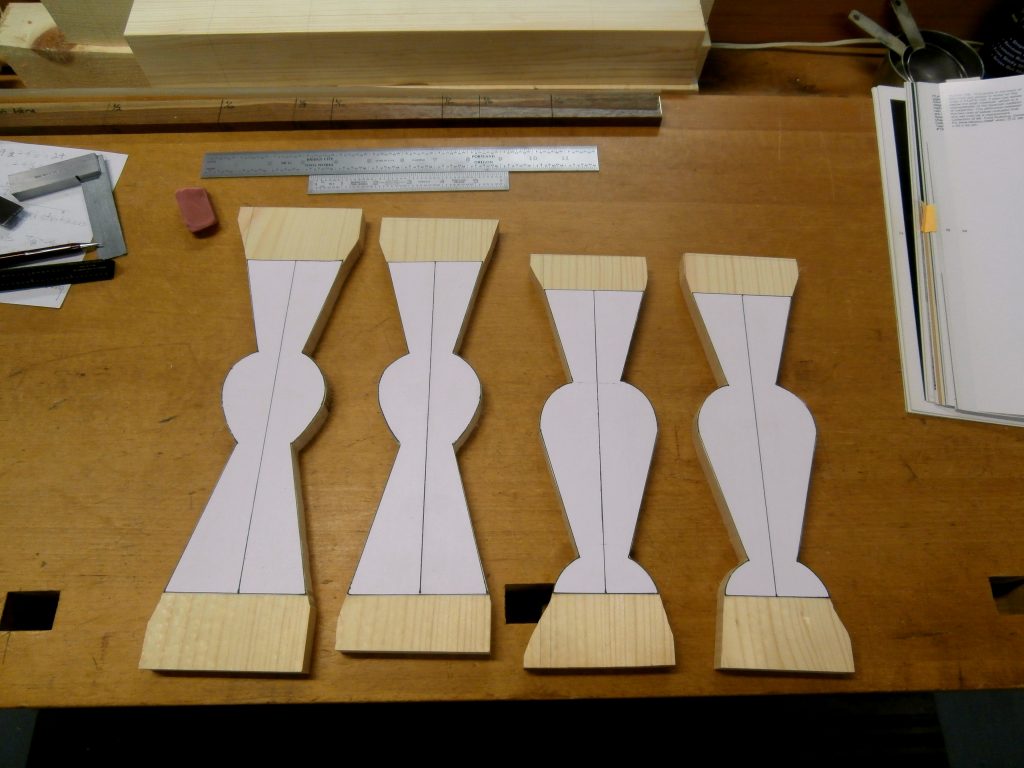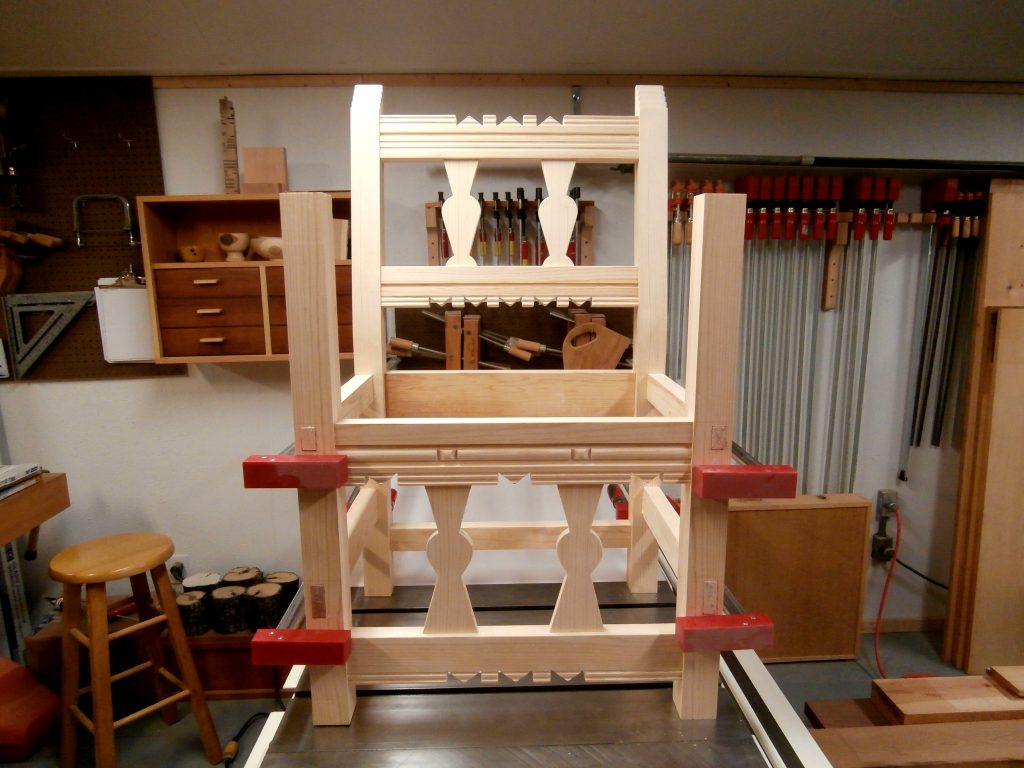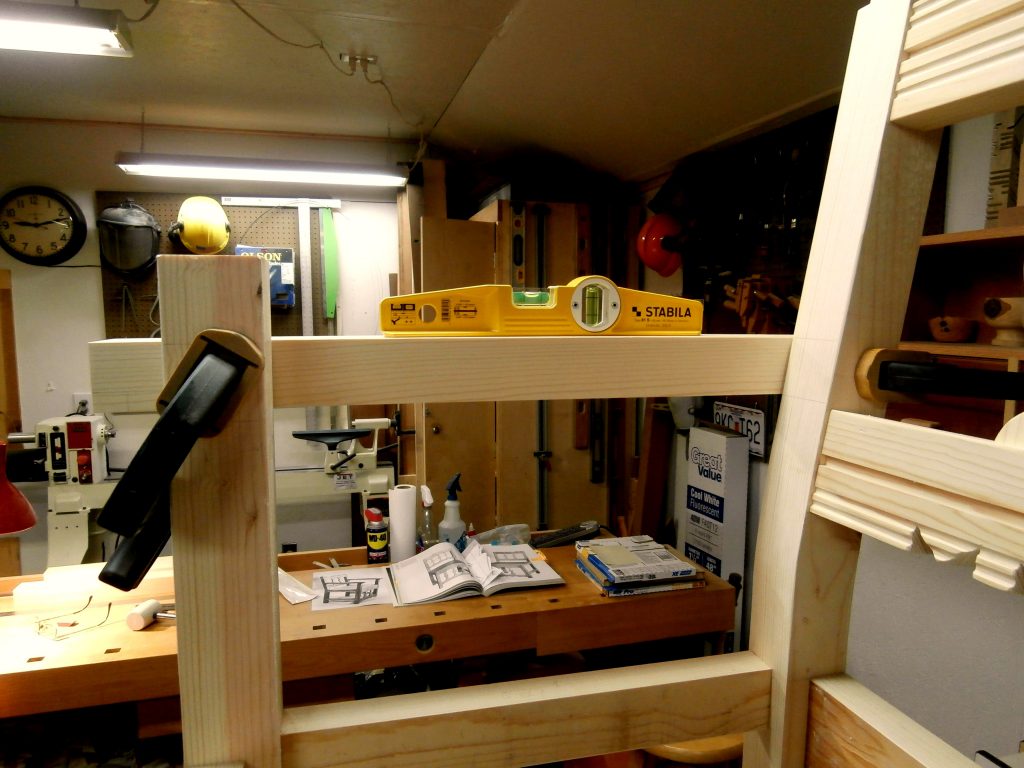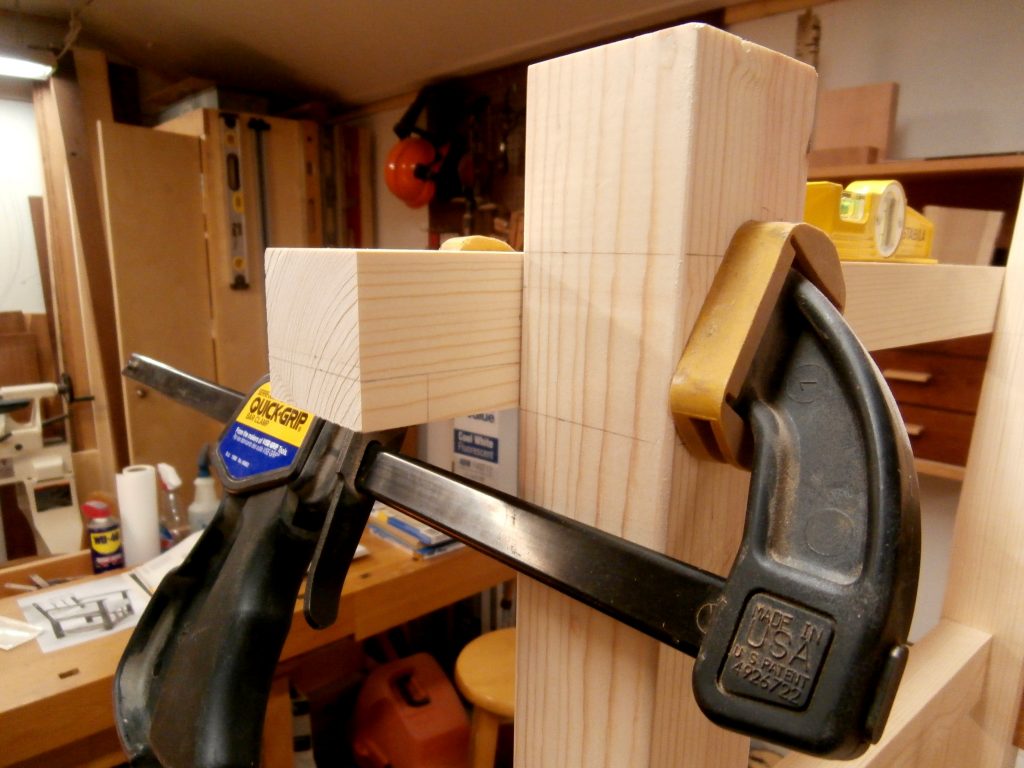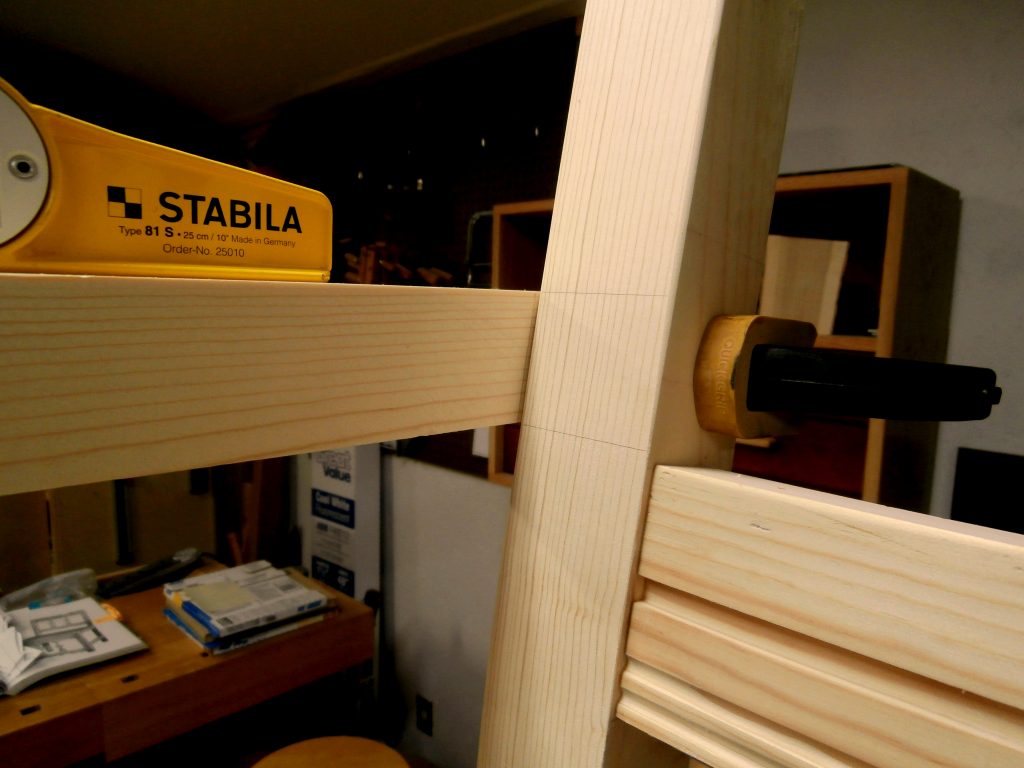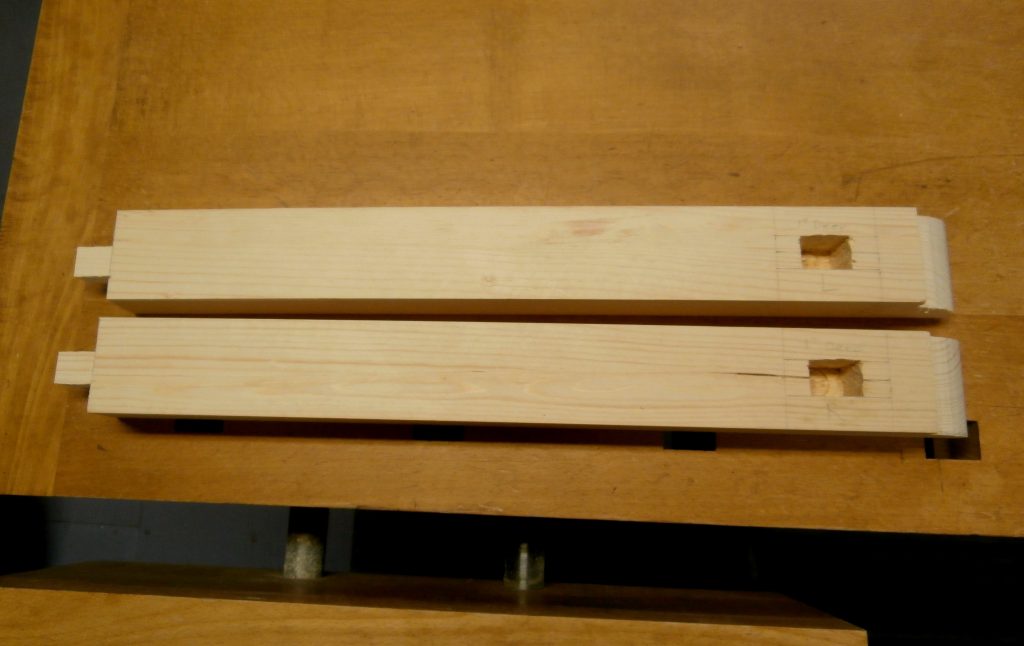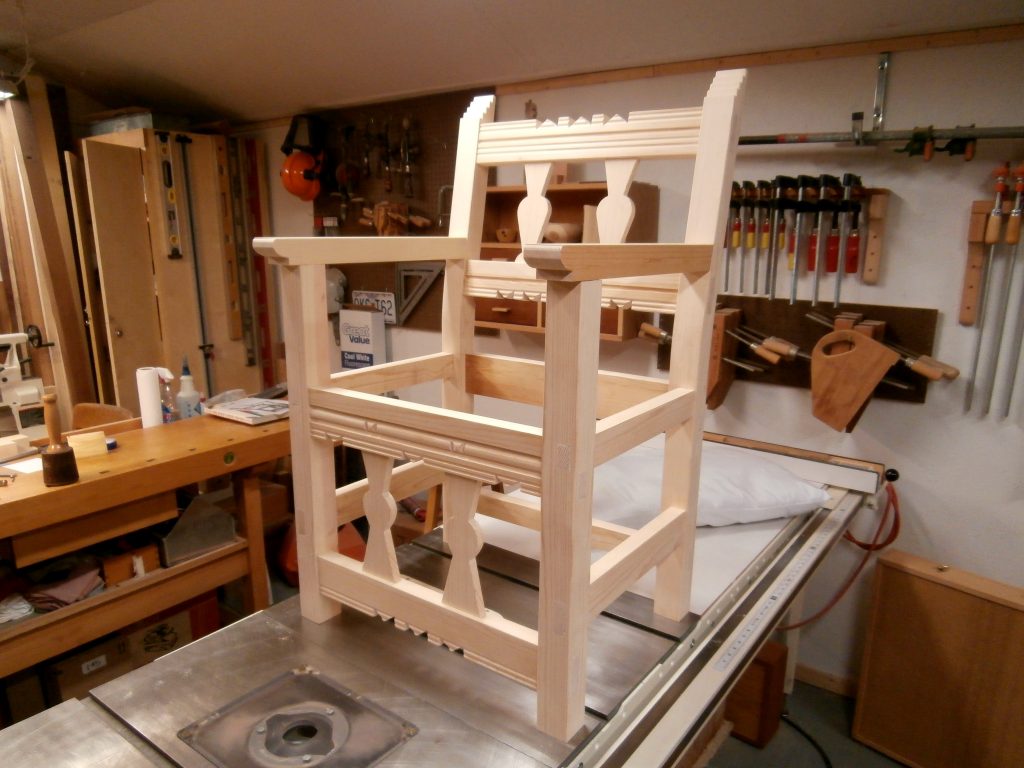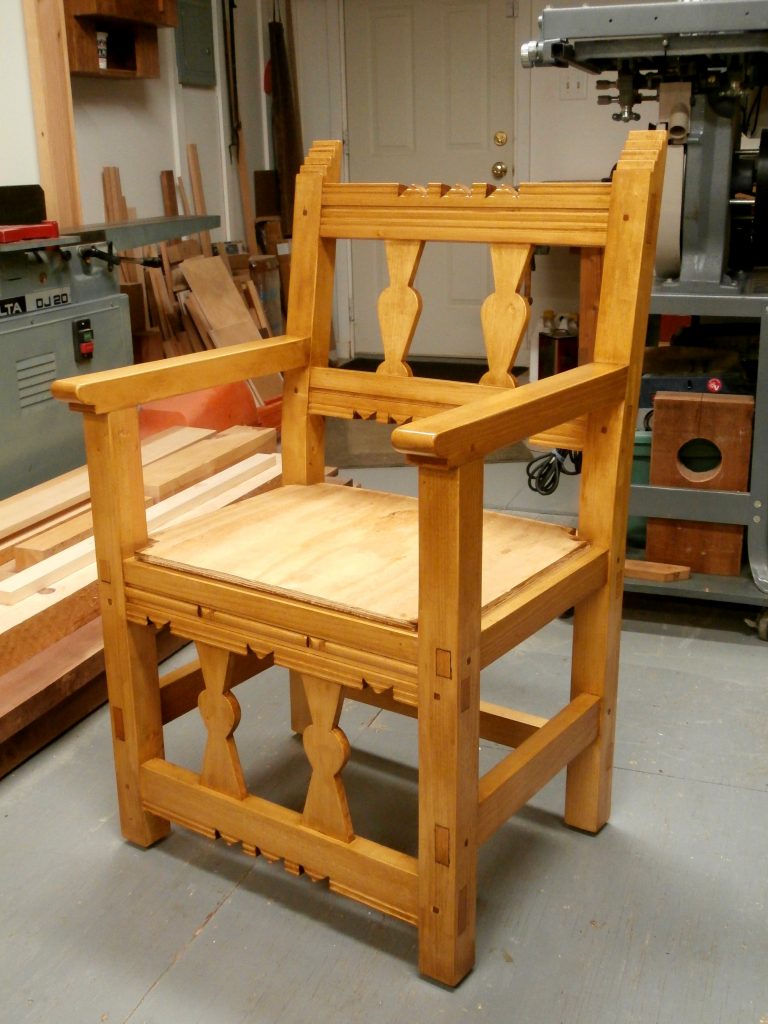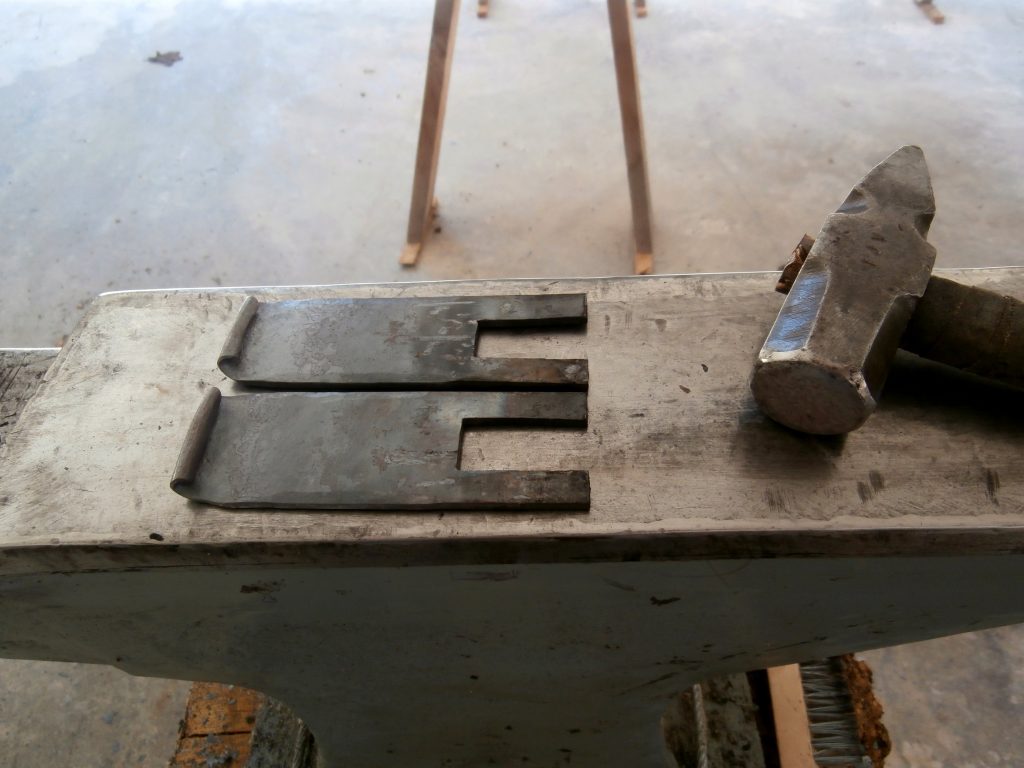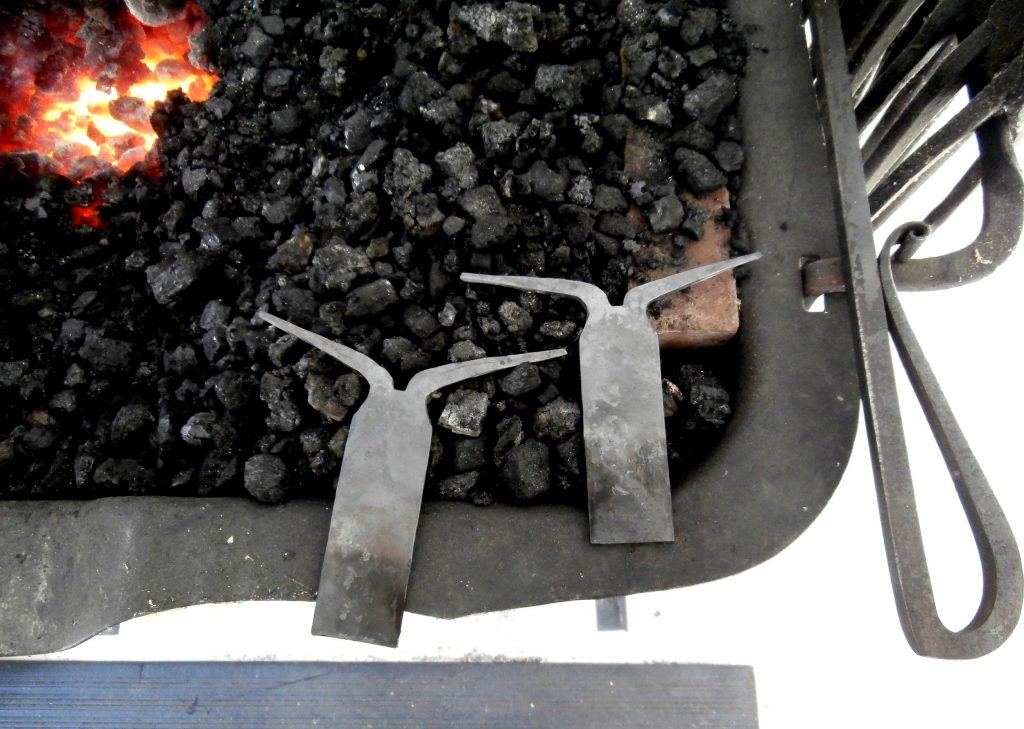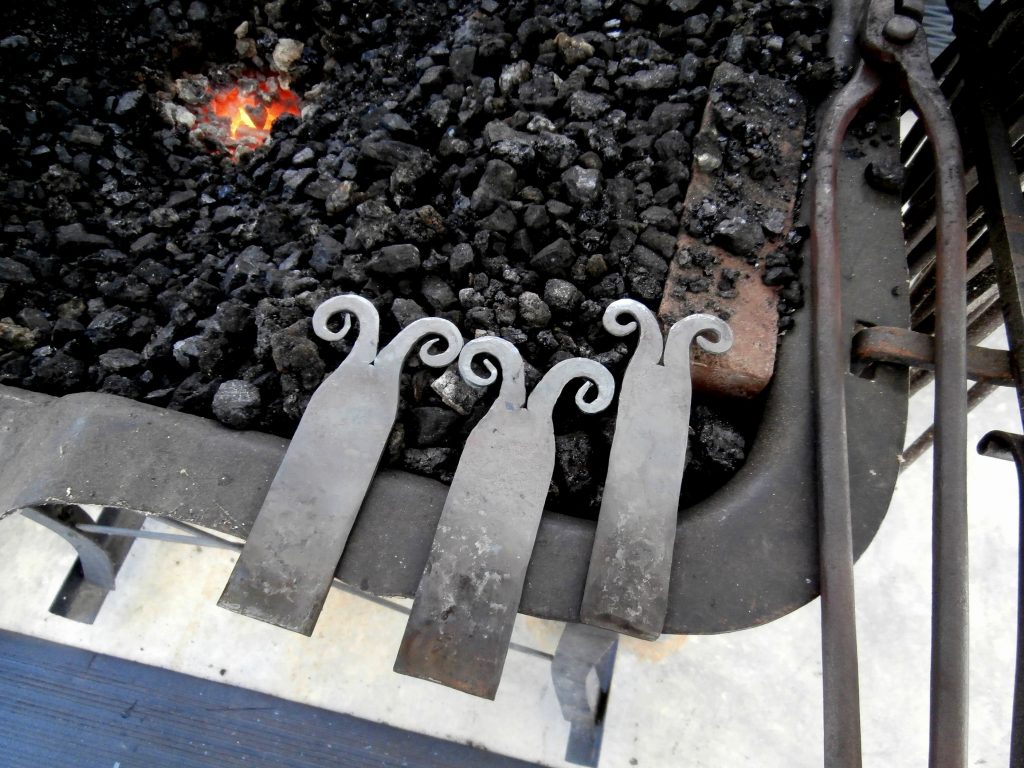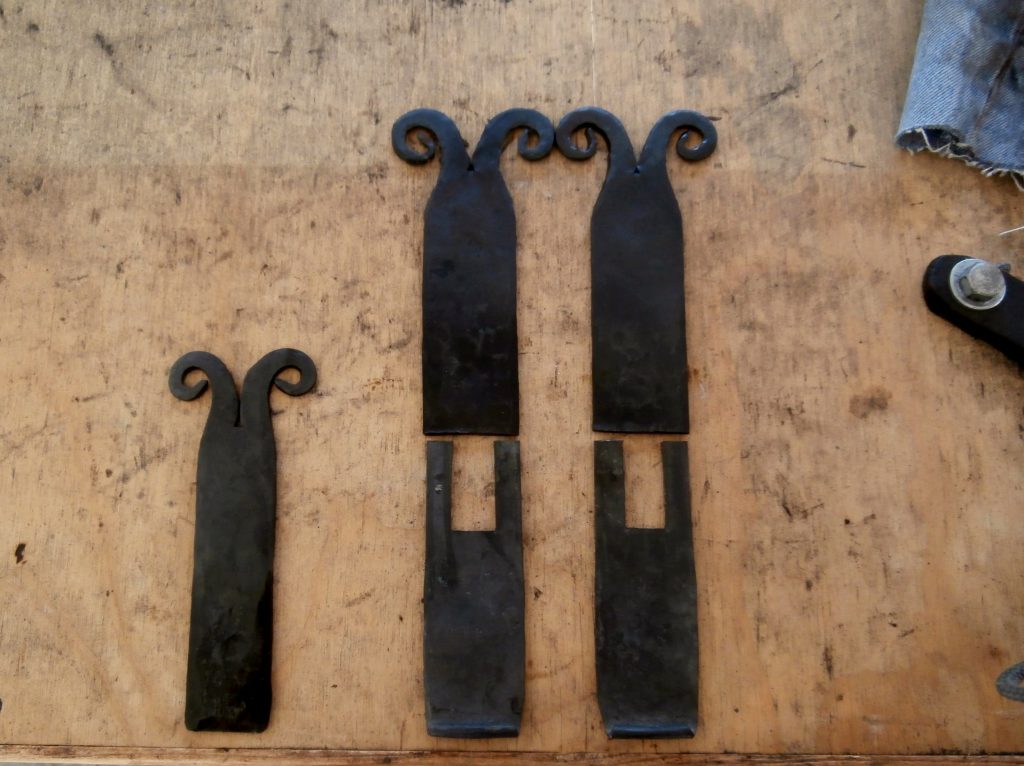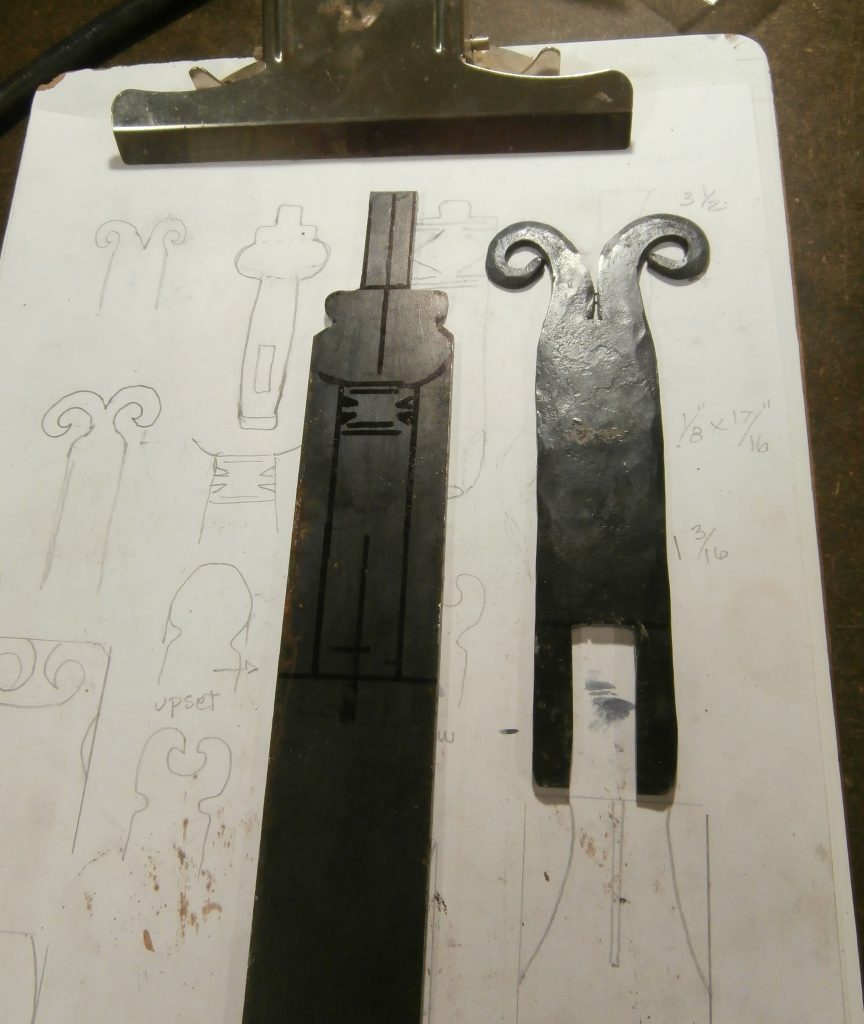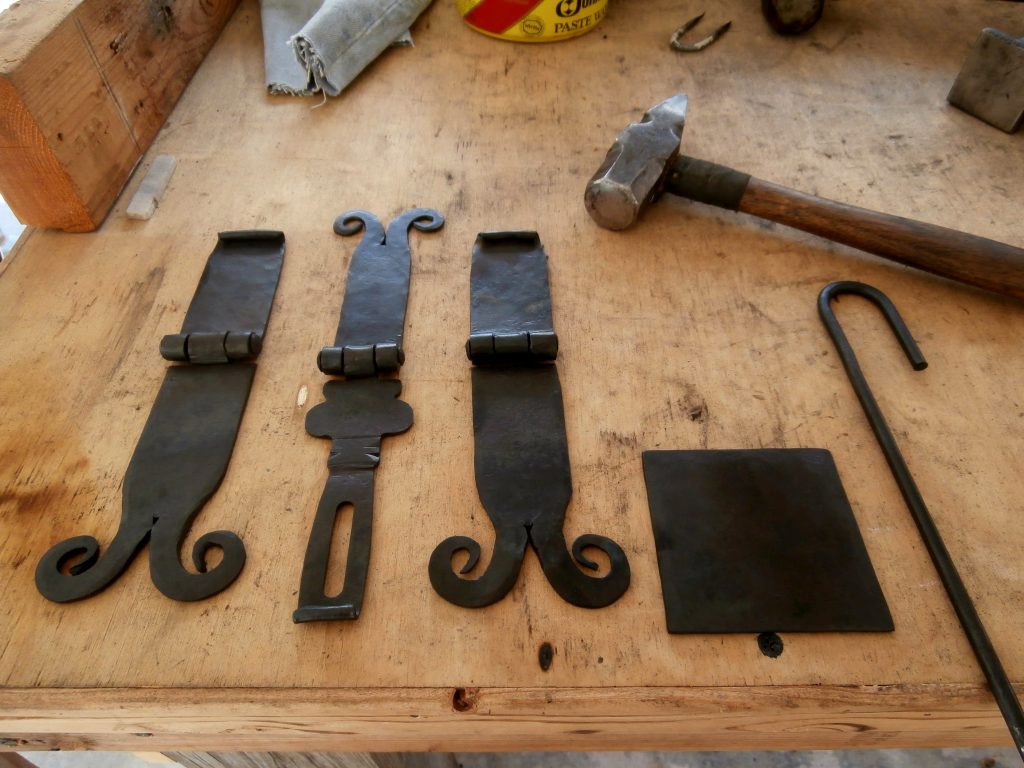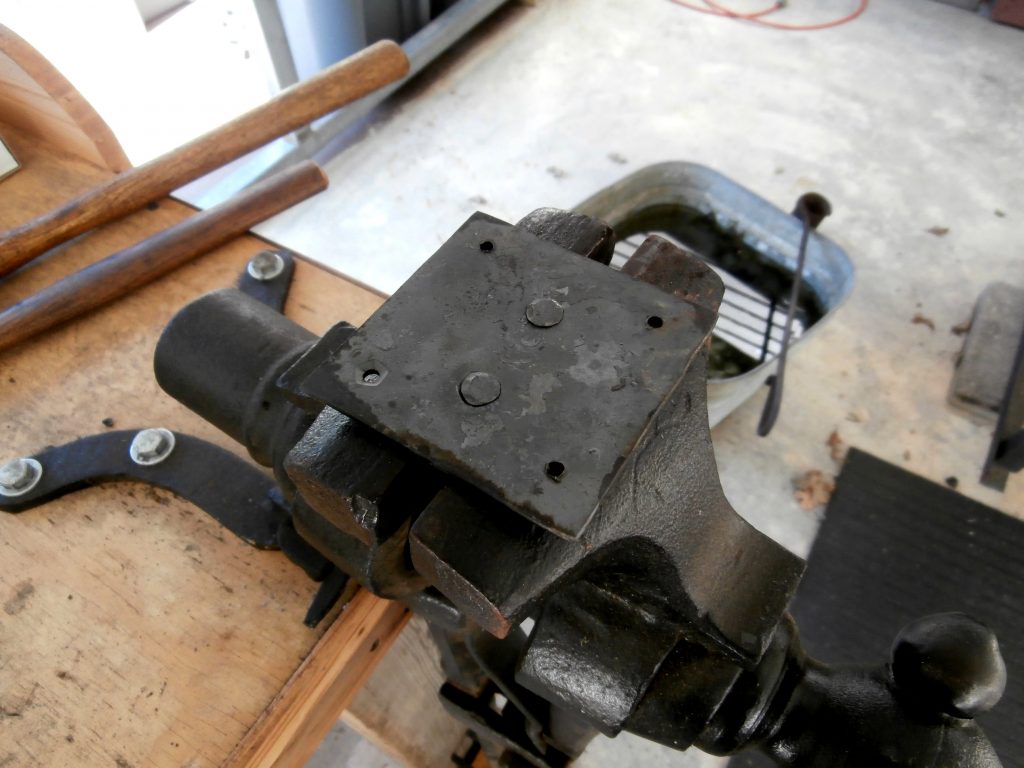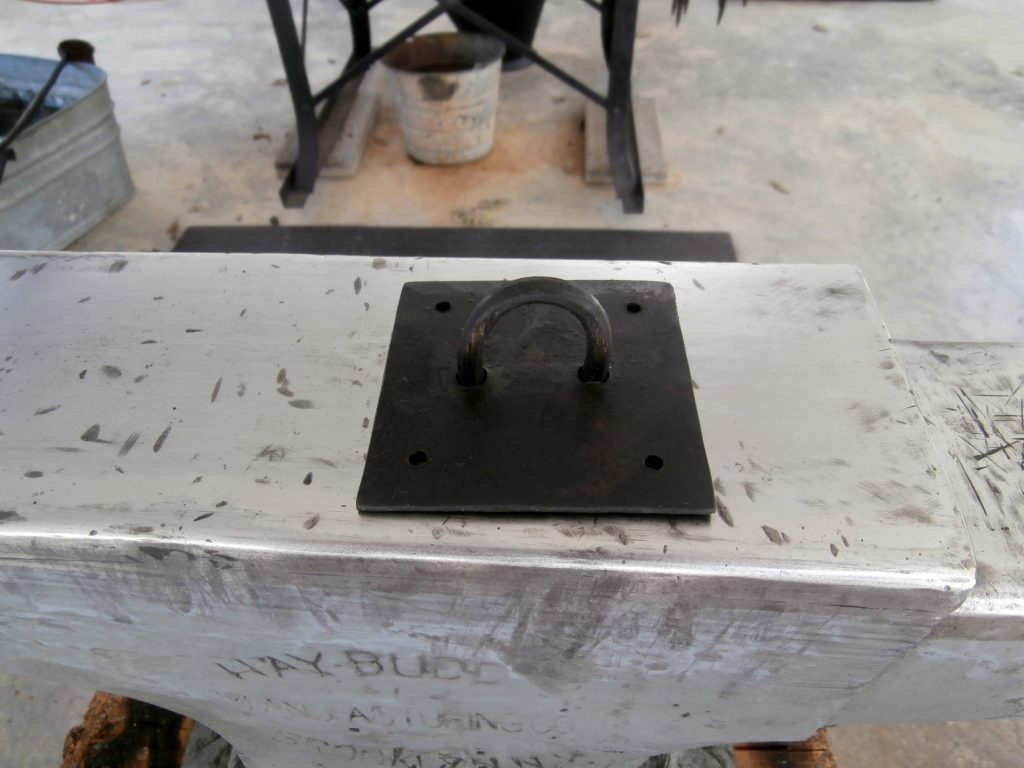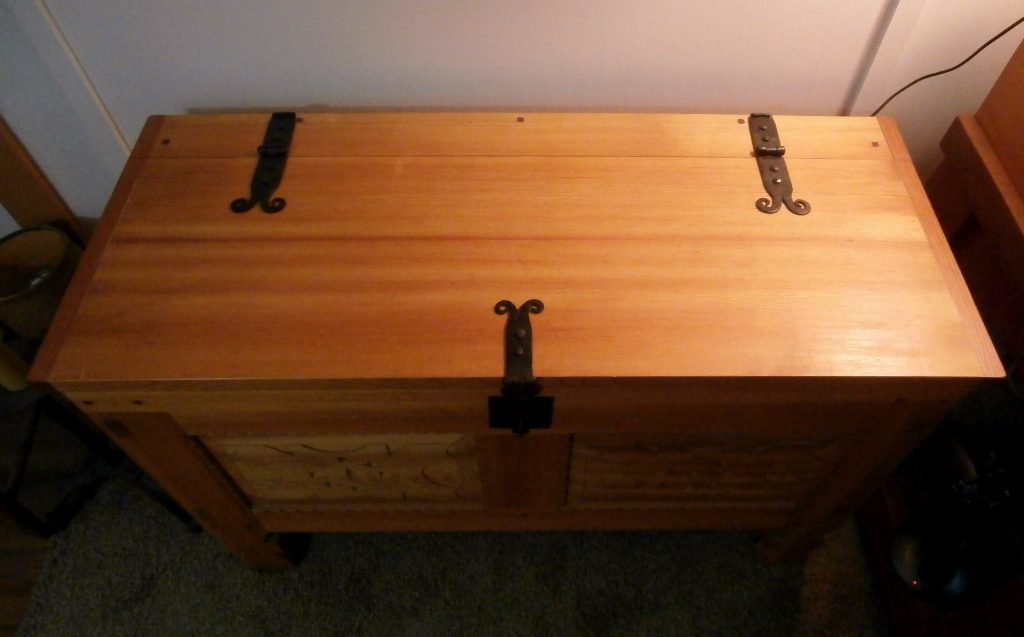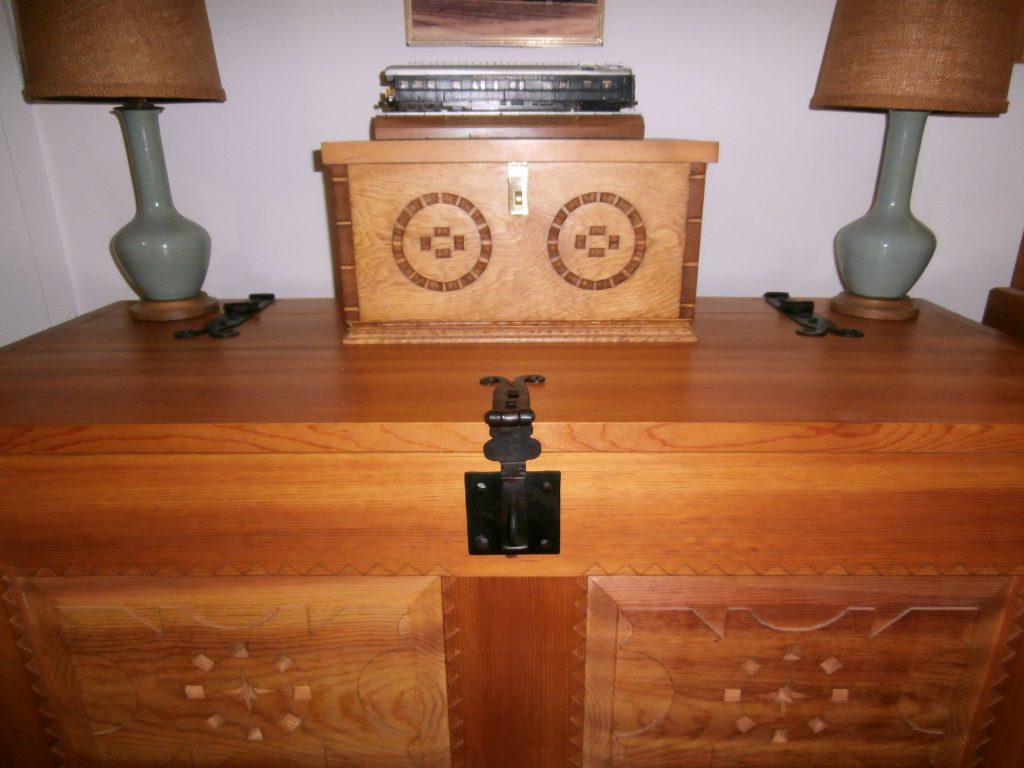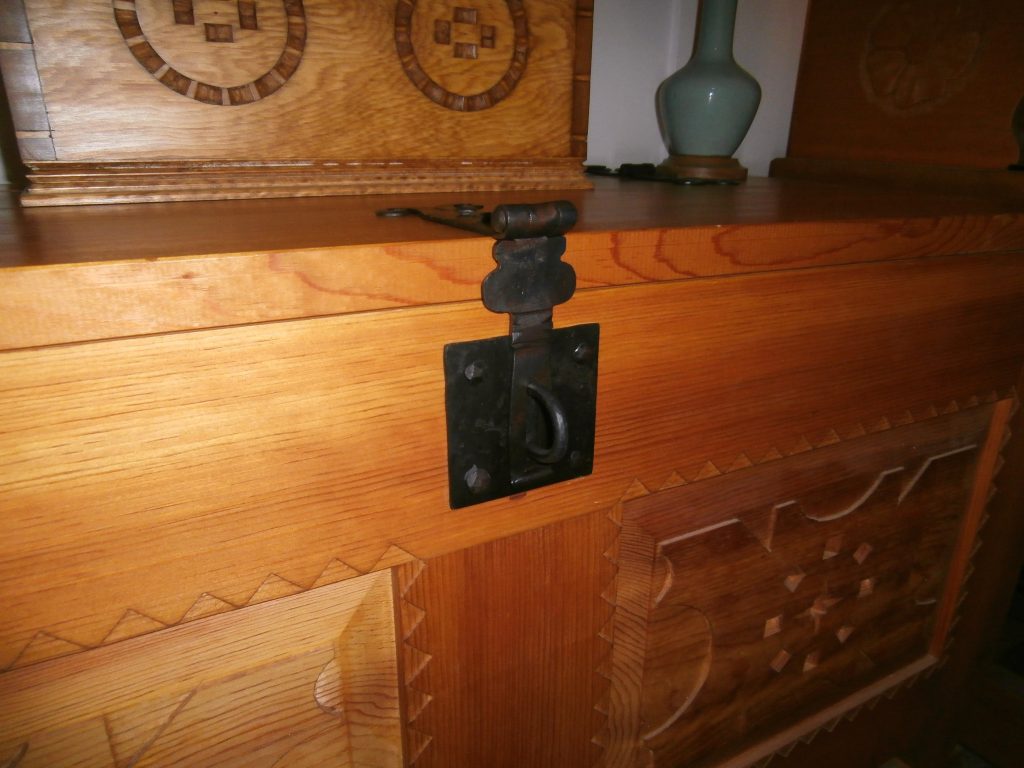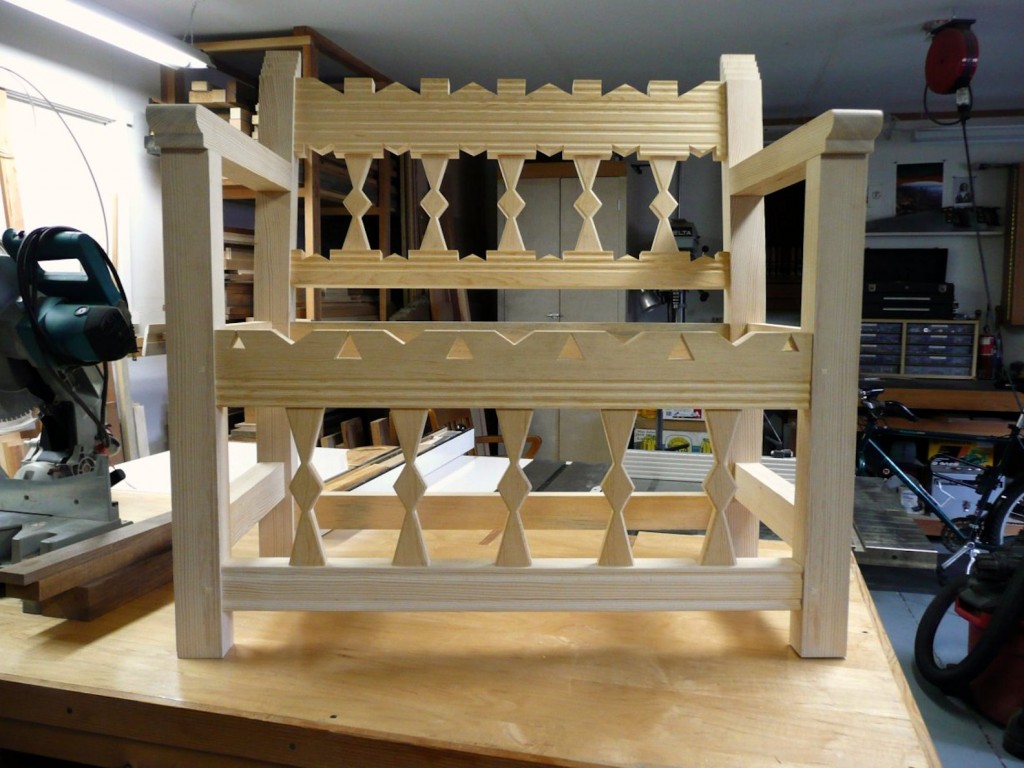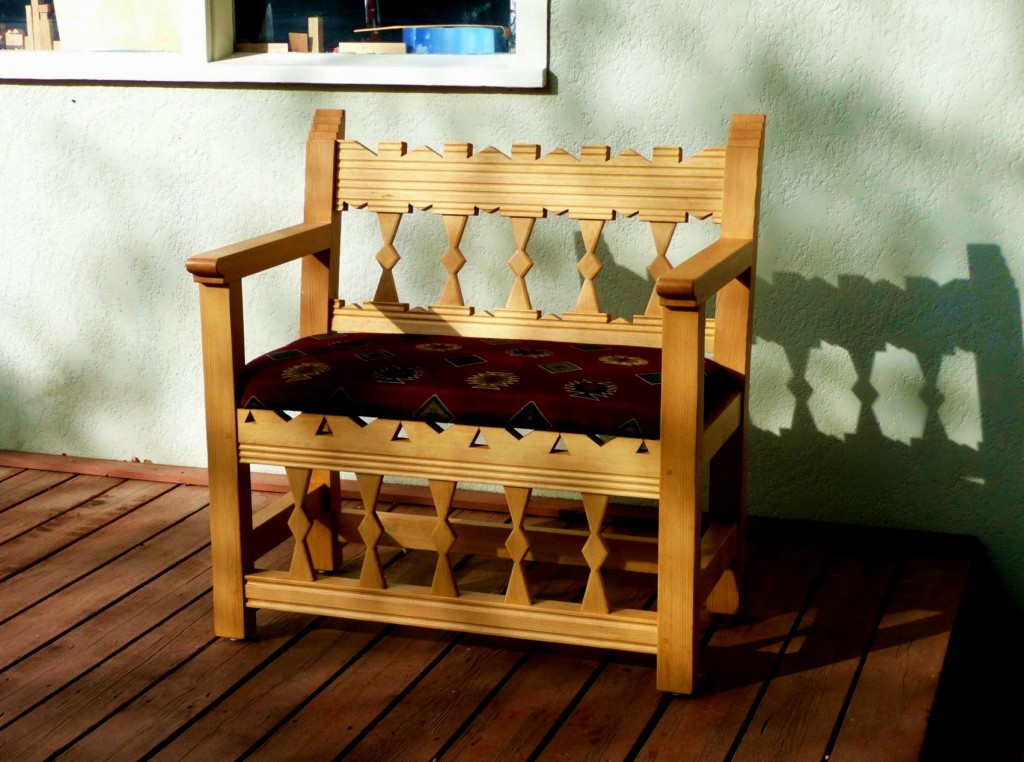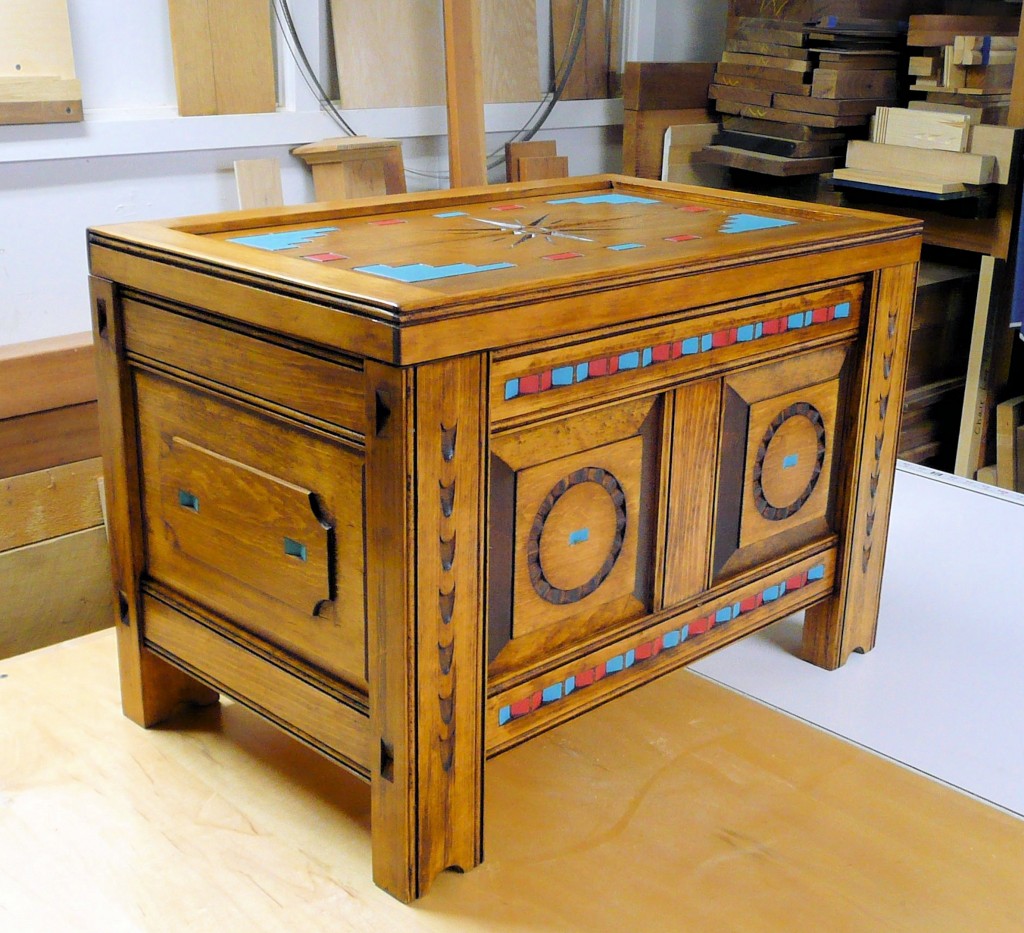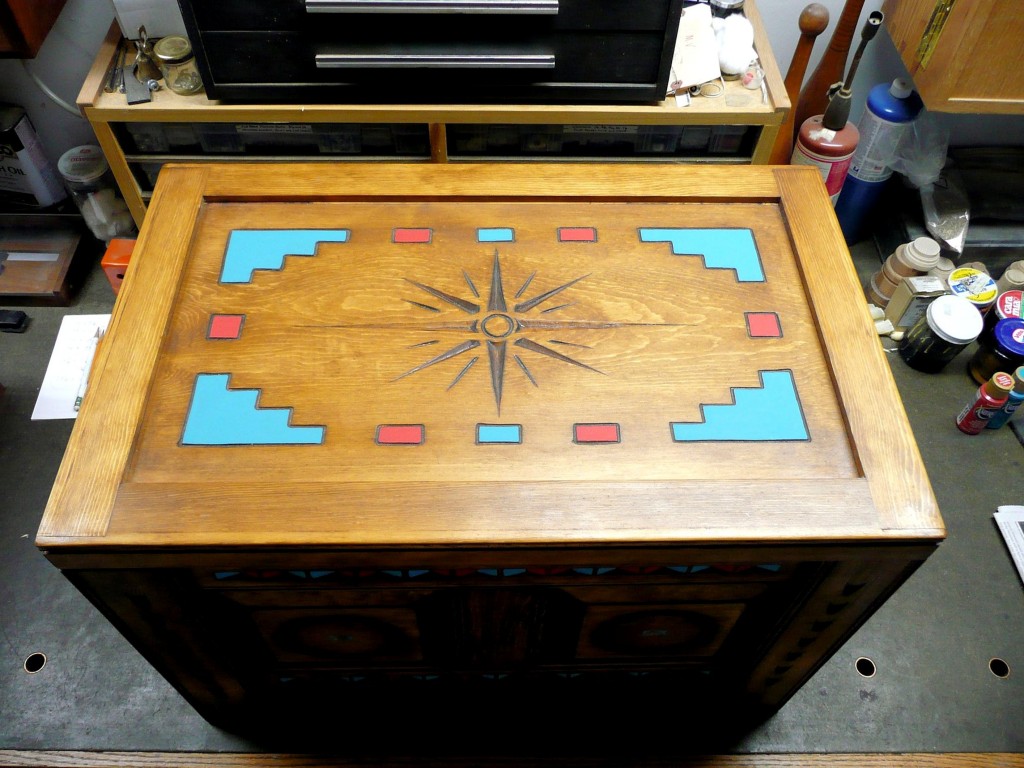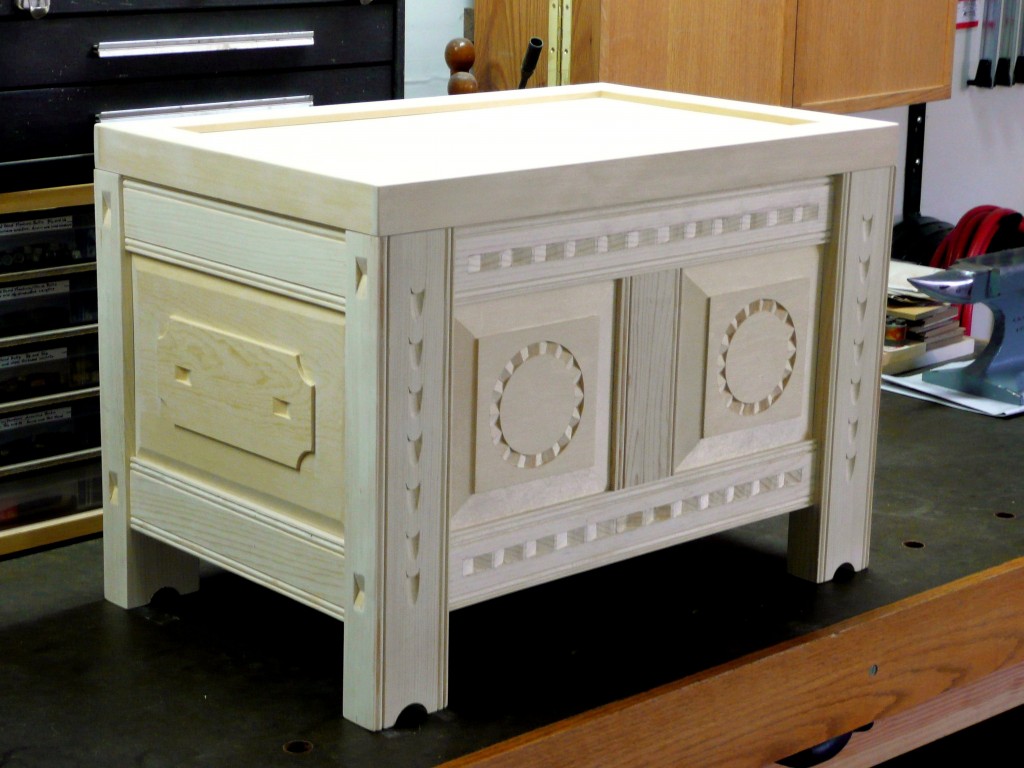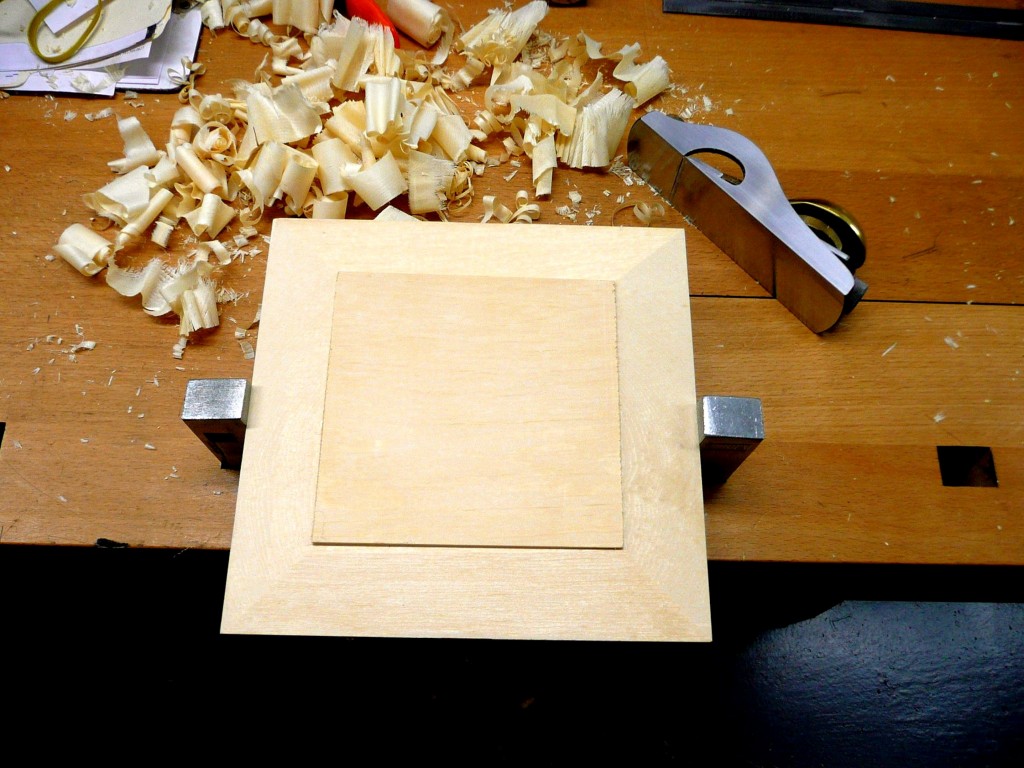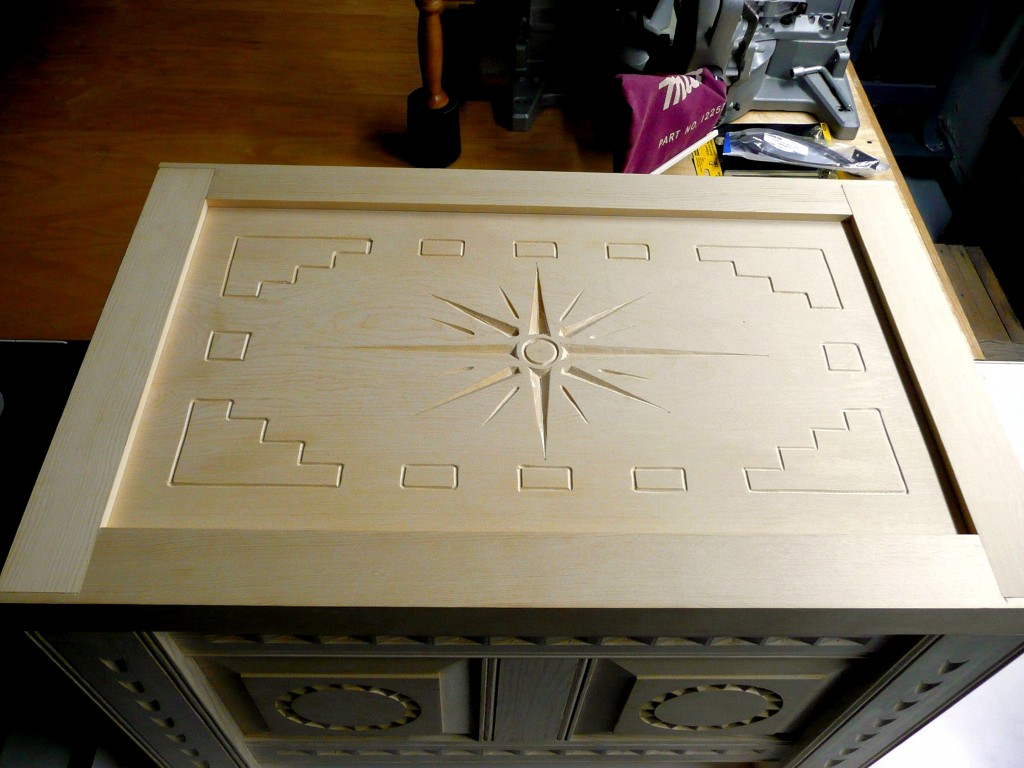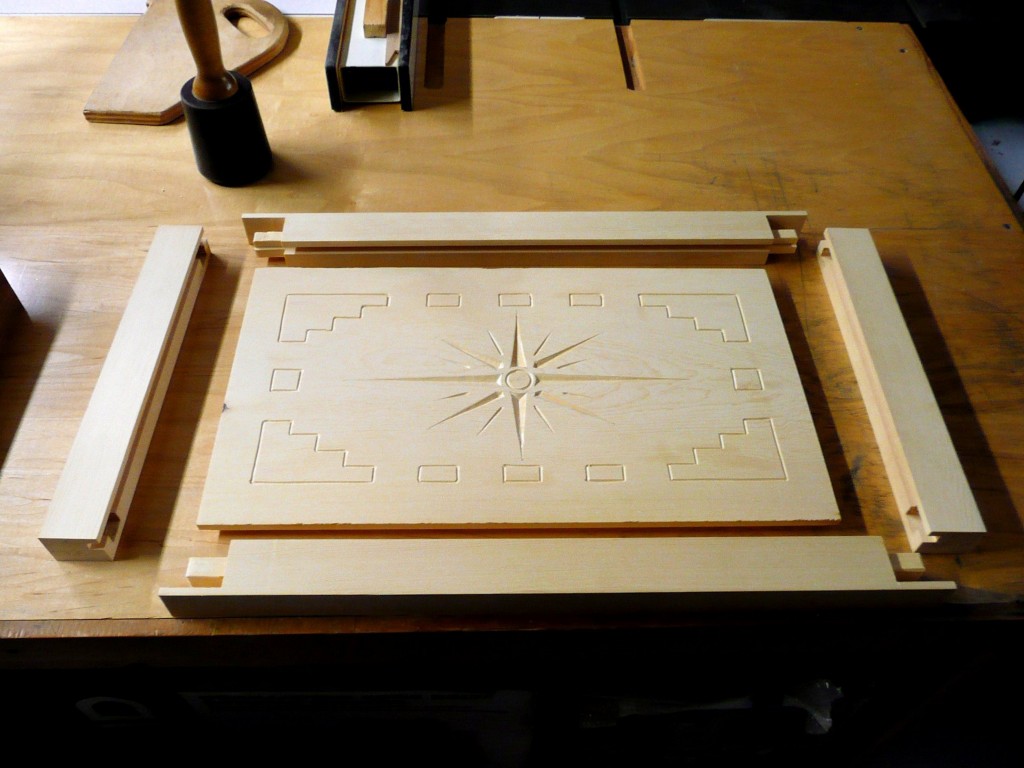I found this picture online of an 18th century chair in the collection of the New Mexico Museum of Art in Santa Fe, New Mexico, known as the Priest’s Chair. See below.
There are a few, early, carved armchairs like this one from northern New Mexico that are referred to as Priest’s Chairs without any documented connections to churches. However, chairs of any kind were few and far between on the northern New Mexico frontier in the 1700’s and armchairs like this one would have been found only in the homes of prosperous Spanish families and in a few Catholic churches with larger congregations. The wood used in the original was the best timber available at the time, Ponderosa pine from the Sangre de Cristo mountains. I decided to make a copy of this chair, with added details, to accompany my carved New Mexico bench (October 2015 Archive) and my carved Harinero chest (January 2018 Archive). This was the last project I completed before dismantling my shop in January 2020.
Without plans or the actual chair to go by, I based my chair dimensions on the research I did for the New Mexico bench and the old photograph. I prepared scaled drawings and then followed my usual practice of cutting and shaping all the individual pieces for the chair, including in this case, the “through” mortise and tenon joinery used on the original (“through” referring to the fact that mortises pass all the way through the wood so that the tenon ends are exposed). See below. [Click on any image to enlarge, All photos ![]() Max Vollmer]
Max Vollmer]
I then tried to estimate the original dimensions of the back splats and those in front, below the seat; drew them on paper, glued the paper down to boards, and rough cut out the shapes on the bandsaw leaving enough wood top and bottom for tenons to go into the chair rails front and back.
The front and back sub-assemblies for the chair, with carved details, looked like this.
I assembled the main chair components, leaving the armrests off at first so that I would be able to accurately locate them on the back legs of the chair.
Locating the armrests was a little tricky. I wanted them level with the ground and at a height that would be comfortable for someone seated in the chair. I clamped the unfinished armrests to the front and back legs, marked their position, and then marked out the mortises in the back legs.
The location of mortises and tenons were marked on the armrests and the chair legs, cut as marked, and then all that remained was to attach them.
I sealed the pine with Minwax Natural and then made a blend of Minwax tinted sealers to darken the wood. Finally, I attached a temporary plywood seat that will be upholstered when I get the chance.

